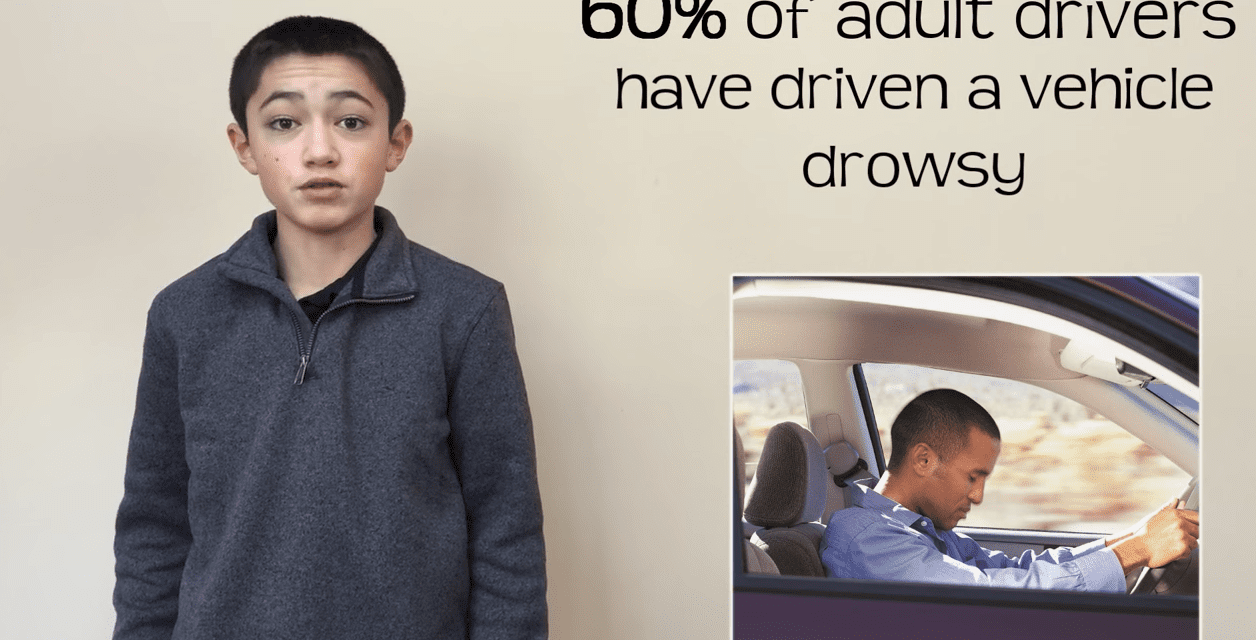Three teams of middle school students from Ohio, Florida, and Pennsylvania have been named national winners in the inaugural year of the Bright Schools Competition. The competition is a collaborative effort of the National Sleep Foundation (NSF) and the National Science Teachers Association (NSTA) that encourages students in grades 6-8 to explore the correlation between light and sleep and how it influences student health and performance. The students were chosen among 170 teams, made up of nearly 550 students from 63 schools. The winning projects include:
Drowsy Driving
The first-place team from Gahanna Middle School East in Gahanna, Ohio, proposed the DriverLight device. After identifying drowsy driving as a problem in their community, the DriverLight team created a device that monitors a user’s heart rate to detect when a driver becomes drowsy. The device responds by sounding an alarm and emitting blue light to keep the driver awake. The team also launched an awareness campaign to educate others in their community. View the student-produced video here.
Controlling Light for Better Sleep
The second-place team from Pine View Middle School in Land O’Lakes, Fla, explored the effects of blue light, which is emitted from electronic devices, and its effect on sleep. The iLUMENate student prototype uses a wearable light tracker, a cell phone app, and a smart home system to monitor the amount of light a user receives throughout the day. The smart home system then uses data from the wearable to adjust the user’s environment to provide the right amount of blue light exposure at the right time of day. View the student-produced video here.
Solutions to Light in School
The third place team also addressed the effects of blue light and sleep. Middle school students from Arcola Intermediate School in Eagleville, Pa, were inspired by new LED lighting installed in their school. The team proposed an experiment to discover the ideal amount of blue light exposure for teenagers, so that it resets the circadian rhythm without negatively affecting the amount of sleep they receive at night. The students also explored solutions to control the lighting in their school, including filters on LED lighting, timers to control light exposure, and protective eyewear to filter blue light. View the student-produced video here.
”The National Sleep Foundation congratulates our Bright Schools Competition inaugural year winners on their excellent projects,” says David Cloud, CEO of the National Sleep Foundation, in a release. “The projects reflect great understanding of the relationship between sleep, light, performance, and safety.”
Under the mentorship of an adult coach/teacher, teams of two to four students were asked to identify, investigate, and research an issue related to light and sleep as it pertains to their community and/or young adolescents. Using scientific inquiry or engineering design concepts, teams developed a prototype, created an awareness campaign, or wrote a research proposal for the competition. Each team submitted a written report detailing their project along with a three-minute video showcasing their investigation. Projects were evaluated on the basis of several criteria, including scientific accuracy, innovativeness, and potential impact. Last month, 50 national finalists were named. Of those finalists, judges chose first-, second, and third-place teams.
“These winning students not only explored important science concepts related to light and sleep, they identified problems and developed possible solutions to critical issues, such as driving safely,” says NSTA executive director David Evans, PhD. “This new competition allowed these winning teams, and the hundreds of other teams who competed, to also work together as a team and learn key communications and research skills.”
Students on the first-place national winning team will each receive a cash prize of $5,000; second place students will receive $2,500; and third-place students will receive $1,500. The coach/teacher of the first place team will also receive a prize package, including Vernier Middle School Probeware, an all-expense paid trip to an NSTA conference, and membership to NSTA. The second-place coach/teacher will receive an all-expense paid trip to an NSTA conference and membership to NSTA, and the third-place coach/teacher will receive membership to NSTA and a $500 gift certificate to use in the NSTA Science Store.
The winning student projects can be found at brightschoolscompetition.org.



